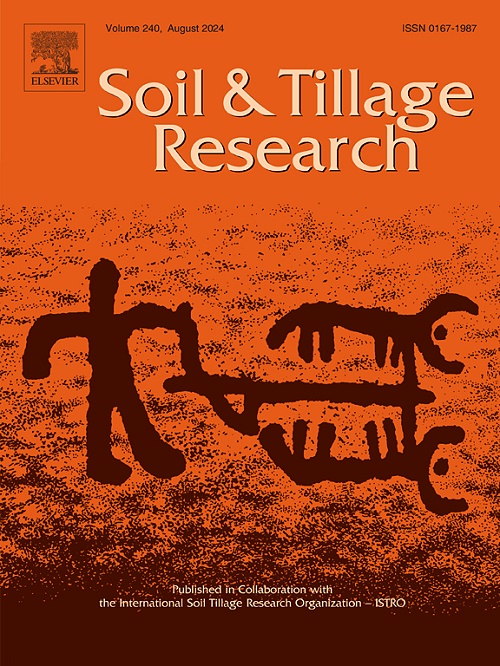Explore the potential for improving phosphorus availability in calcareous soil through electrokinetic methods
IF 6.1
1区 农林科学
Q1 SOIL SCIENCE
引用次数: 0
Abstract
Phosphorus (P) is a key nutrient that limits plant growth. The world's supply of phosphorus is limited, making it vital to maximize soil phosphorus consumption and minimize P inputs. This study was motivated by these challenges to examine in-depth soil electrokinetics (SEK), which supports the theory of electro-agric technology (A. Abou-Shady & El-Araby, 2021) that was introduced to overcome agricultural problems in arid and semi-arid regions. Our goal is to optimize P availability/use efficiency and significantly diminish P losses in agroecosystems via intensive fertilization. Our search turned up limited literature on the topic of enhancing soil nutrient availability through the application of electric fields. This involves studying the relevant factors of SEKs, such as applied voltage (0.5, 1, and 1.5 V), experimental time (3, 7, and 10 days), and SEK design change (regular, provided with anode reservoir, and with hydrostatic head) by applying the Taguchi technique (L9OA). Calcareous soil was chosen as a target soil owing to its high pH that reduces P availability. The results indicate that short period (3 days), applied voltage (1 V cm−1), and SEK design with an anode reservoir are the best characteristics for enhancing P availability in calcareous soil. After the SEK tests were finished, four samples were obtained from the calcareous soil at equal intervals. In the four sections, the available P concentration ratios from anode to cathode were 1.51 (50.51 % increase), 1.16 (16.01 % increase), 1.15 (14.90 % increase), and 0.65, (34.65 % drop), indicating a greater availability of P adjacent to the anode. Taguchi's analysis revealed that the SEK method increases P availability in calcareous soil without being time-dependent, which is advantageous because it requires less energy. The pH decreases around the anode in the soil were less than the cathode's surrounding increases. Because of the water electrolysis on the anode surface, which lowers the pH of the water, the P content in the anode reservoir was higher than that of the hydrostatic head. Two future visions to help SEK applications for improving nutrient availability would be 1) process intensification and optimization, and 2) integrated acid and hydrogen production.
求助全文
约1分钟内获得全文
求助全文
来源期刊

Soil & Tillage Research
农林科学-土壤科学
CiteScore
13.00
自引率
6.20%
发文量
266
审稿时长
5 months
期刊介绍:
Soil & Tillage Research examines the physical, chemical and biological changes in the soil caused by tillage and field traffic. Manuscripts will be considered on aspects of soil science, physics, technology, mechanization and applied engineering for a sustainable balance among productivity, environmental quality and profitability. The following are examples of suitable topics within the scope of the journal of Soil and Tillage Research:
The agricultural and biosystems engineering associated with tillage (including no-tillage, reduced-tillage and direct drilling), irrigation and drainage, crops and crop rotations, fertilization, rehabilitation of mine spoils and processes used to modify soils. Soil change effects on establishment and yield of crops, growth of plants and roots, structure and erosion of soil, cycling of carbon and nutrients, greenhouse gas emissions, leaching, runoff and other processes that affect environmental quality. Characterization or modeling of tillage and field traffic responses, soil, climate, or topographic effects, soil deformation processes, tillage tools, traction devices, energy requirements, economics, surface and subsurface water quality effects, tillage effects on weed, pest and disease control, and their interactions.
 求助内容:
求助内容: 应助结果提醒方式:
应助结果提醒方式:


